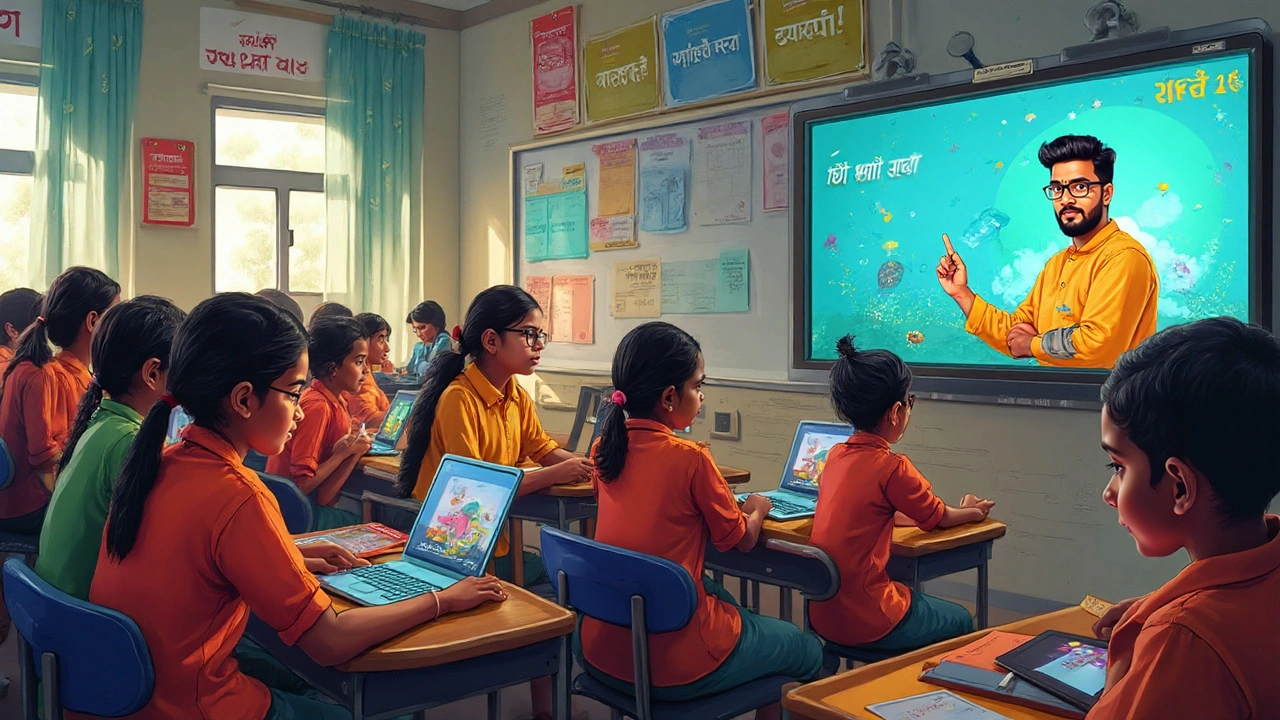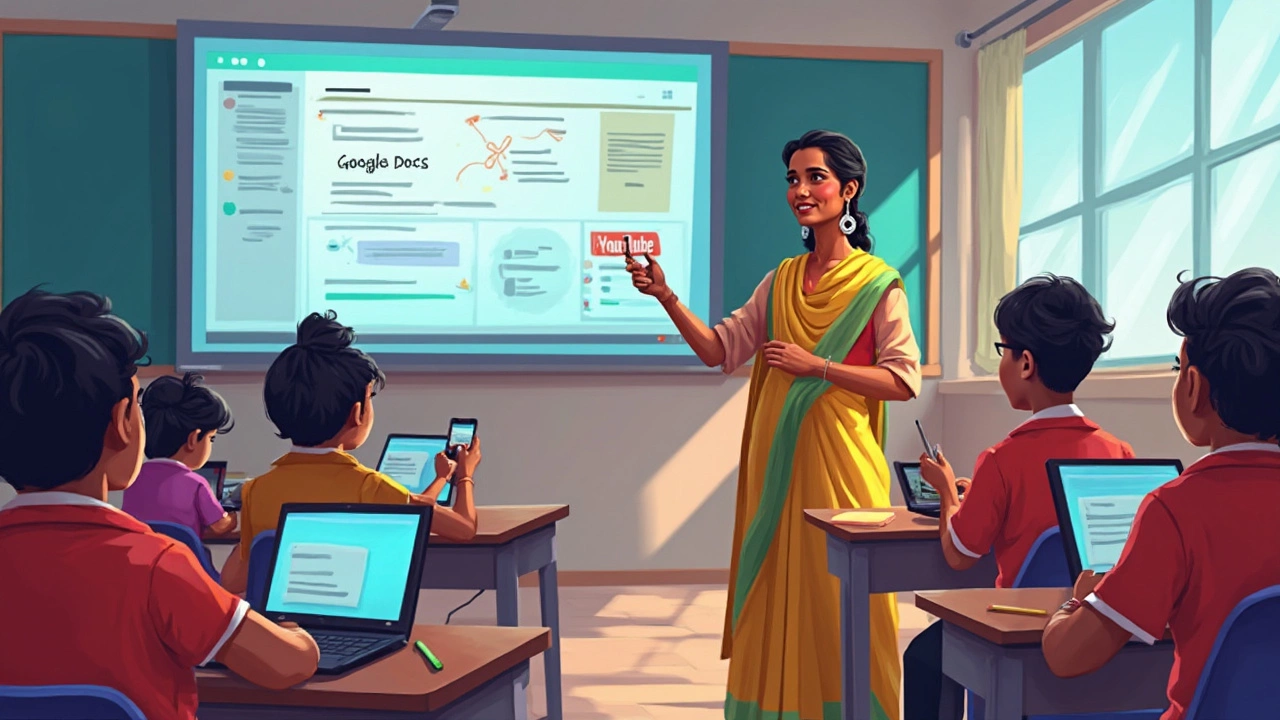Online Learning Guide: Choose the Best Platforms and Boost Your Skills
Online learning has gone from a novelty to a daily routine for millions of students, professionals, and hobbyists. Whether you’re hunting for a new coding class, prepping for an exam, or just curious about a subject, the right digital tools can make a huge difference. This guide cuts through the hype and gives you clear steps to pick, use, and benefit from e‑learning in 2025.
Why Online Learning Is Here to Stay
First off, flexibility is the biggest draw. You can study at night, on weekends, or between meetings without missing a beat. The pandemic showed that good content can be delivered over a browser just as well as in a physical classroom. Plus, platforms now offer interactive quizzes, video labs, and peer discussion groups that mimic real‑world practice. Those features keep learners engaged and help them retain knowledge longer.
Picking the Right Platform for Your Goals
Not all e‑learning sites are built the same. Start by listing what you need: certifications, hands‑on projects, or just a casual overview. If you want recognized credentials, look for platforms that partner with universities or industry bodies – think Coursera, edX, or UpGrad. For skill‑focused learning, sites like Udemy, Skillshare, and the most used learning platform, which we covered in a recent deep dive, provide bite‑size videos and real‑world assignments. Check user reviews, course updates, and refund policies before you commit.
Cost matters, too. Many platforms offer free trials or audit options that let you peek at the material before paying. If you’re on a budget, open‑source options such as Khan Academy or government‑run portals can still deliver quality lessons, especially for school subjects. Remember that the cheapest choice isn’t always the best – sometimes a modest subscription unlocks mentorship or live support that speeds up your progress.
Another tip: match the platform’s format to your learning style. Visual learners thrive on video lectures with subtitles and diagrams. Readers prefer detailed PDFs or slide decks. Interactive learners need quizzes, coding sandboxes, or virtual labs. Most platforms let you switch between formats, so experiment until you find the sweet spot.
Staying motivated is the next hurdle. Set a realistic schedule and treat each lesson like a meeting you can’t miss. Use built‑in progress trackers or external habit apps to log your study time. Joining a community – whether a forum, Discord channel, or study group – adds accountability and lets you ask questions when you’re stuck.
Finally, think about how to apply what you learn. Take notes in a digital notebook, create mini‑projects, or teach the concept to a friend. Real‑world application not only solidifies knowledge but also builds a portfolio you can showcase to employers. Many platforms now include capstone projects that you can share on LinkedIn – a quick win for your career.
Online learning isn’t a magic bullet, but with the right platform, schedule, and mindset, it can become a powerful tool for personal and professional growth. Start by exploring a couple of free courses, test the features you love, and gradually invest in the ones that match your goals. Happy learning!
What Is Distance Education in Simple Terms?
Distance education lets you learn without being in a classroom. It's flexible, affordable, and valid for jobs - if you pick the right course. Here's how it really works in 2025.
read moreWhat is eLearning Called? Understanding Modern Learning Terms & Platforms
Explore what eLearning is called, why the term matters, and how it shapes modern education. Dive into current trends, tools, and best practices for digital learning.
read moreTop 5 eLearning Models Explained: Online Learning Approaches That Work
Discover 5 major eLearning models used in online education today. See how blended, flipped, and self-paced learning reshape classrooms and training.
read moreDistance vs Online Learning: Key Differences Explained for Modern Students
Ever wondered how distance learning actually differs from online learning? Discover key differences, program formats, and which fits your lifestyle and goals best.
read moreTop eLearning Platforms: Best Online Learning Sites Compared for 2025
Discover leading eLearning platforms for every learner. Compare features, benefits, and unique details to choose the right online learning site for your needs.
read moreIs Google an E-Learning Platform? The Facts Everyone Gets Wrong
People often wonder if Google counts as an e-learning platform, especially after the rise of Google Classroom and all its online tools. This article breaks down what makes something an actual e-learning platform and dives into how Google fits into the big picture. You'll see where Google shines, where it falls short, and what this means for teachers, students, or anyone learning online. Get ready for some practical tips on using Google for your own learning. You'll never look at Google Docs or YouTube the same way again.
read moreWhich Educational App Is Totally Free? The Truth About E-Learning Platforms
Many people assume all educational apps cost money, but that's not always true. Some platforms genuinely offer free courses with no sneaky fees or paywalls. This article looks into which popular educational apps are actually 100% free and what you get with them. You’ll see some hidden gems, tips for getting more value, and things to watch out for. Don’t waste time on half-free apps when you can learn everything you want without spending a rupee.
read moreDistance Education: Definition, Essentials, and How It Works
Distance education means learning that happens away from a traditional classroom—usually online or through other digital tools. This article explains what distance education really is, how it stands apart from in-person classes, and what tools and methods make it tick. You’ll also get tips for making distance learning work for you. Everything’s broken down in simple terms, so it's easy to follow even if you’re new to the idea.
read moreEasiest Degree to Get Online: What You Need to Know Before Choosing
Curious about the easiest degrees to get online? This article breaks down popular majors people find manageable, what makes a degree 'easy,' and real tips for finishing faster. It covers myths, facts, and what to watch out for before signing up. If you want a straightforward path to a diploma that fits into your busy life, here's what you should consider. Find out if these degrees really open doors—or just lighten your study load.
read moreDefining Distance Education: What Really Sets It Apart?
Distance education isn’t just about online classes—it's about learning when and where you want, often with a mix of live video, recorded lessons, and digital tools. This article unpacks what truly defines distance education, how it works in real life, and where it's heading. You'll get practical tips for getting the most out of remote learning and real examples of what to expect. No fluff, just clear facts and advice to help you navigate distance education. Whether you're already a student or curious about making the switch, this read's for you.
read moreDiscover the Three P's of eLearning for Success
Explore the three essential P's of eLearning: Personalization, Practicality, and Participation. These principles are key to enhancing online education experiences. Learn how each aspect contributes to successful and engaging eLearning environments.
read moreThe Real Value of Online Courses: Unveiling Their Worth
The rise of online classes has transformed the way education is delivered, offering flexibility and access to a wide variety of courses. This article explores the value of online classes, weighing their benefits against potential drawbacks, and provides valuable insights for those considering digital education. Discover how online courses can fit into your educational goals and learn some tips to maximize your online learning experience.
read more










